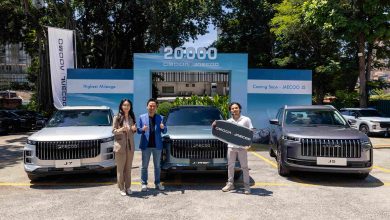VW குழு ‘டீசல் ஸ்கான்டல்’ செலவுகள் USD25 பில்லியனை எட்டியது மற்றும் இன்னமும் லாபம் ஈட்டியது?

டொயோட்டா உமிழ்வு மோசடி ஊழல் மூலம் கனடாவில் உள்ள வாகனங்களின் உரிமையாளர்களுடன் USD232 மில்லியன் மதிப்புடைய ஒரு தீர்வுக்கு Volkswagen AG ஒப்புக் கொண்டுள்ளது. இந்த உடன்படிக்கை, கனடாவில் உள்ள 3.0 லிட்டர் வோக்ஸ்வாகன், ஆடி மற்றும் போர்ஸ் டீசல் வாகனங்களின் சுமார் 20,000 அலகுகள் உரிமையாளர்களிடம் பணம் செலுத்துவதோடு நீதிமன்ற ஒப்புதலுக்கு உட்பட்டது. ஜேர்மன் வாகன உற்பத்தியாளர் கனடிய டாலர் சிவில் தண்டனையை USD2.5 மில்லியன் செலுத்த ஒப்புக்கொண்டார்.

கடந்த ஆண்டில், அமெரிக்காவில் இதேபோன்ற தீர்வு, VW 3.0 லீட்டர் எஞ்சின்கள் கொண்ட 80,000 வாகனங்களை மீண்டும் அல்லது வாங்குவதற்கு குறைந்தது USD1.22 பில்லியன் செலவழிக்க ஒப்புக்கொண்டது. இது USD8,500 மற்றும் USD17,000 க்கும் அதிகமான உமிழ்வுகளுக்கான திருத்தங்களைப் பெற்ற வாகனங்கள் உரிமையாளர்களுக்கு வழங்க ஒப்புக்கொண்டது.
மொத்தத்தில், ஜேர்மனியின் வாகன உரிமையாளர் இப்போது அமெரிக்க $ 25 பில்லியனுக்கும் அதிகமான அமெரிக்க டொலர்களான உரிமையாளர்கள், சுற்றுச்சூழல் கட்டுப்பாட்டு அதிகாரிகள், யு.எஸ். மாநிலங்கள் மற்றும் விற்பனையாளர்களிடம் இருந்து வாங்கும் உரிமைகளை வாங்குதல் மற்றும் வாங்குதல் சலுகைகள் ஆகியவற்றைப் பெறுவதற்கு ஒப்புக் கொண்டார். செப்டம்பர் மாதம் ஊழல் தொடர்பாக அமெரிக்க டாலர் 30 பில்லியன் டாலரை ஒதுக்கியது.




